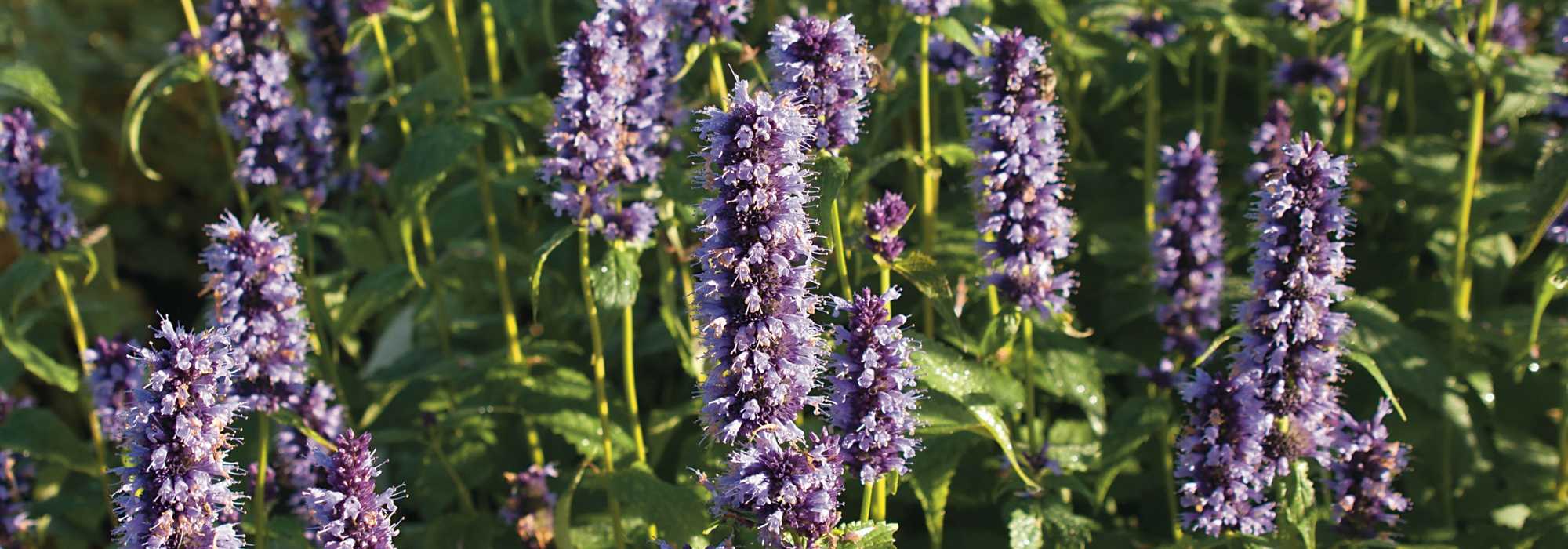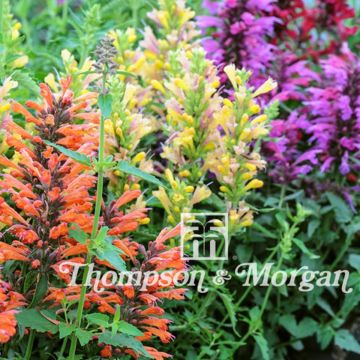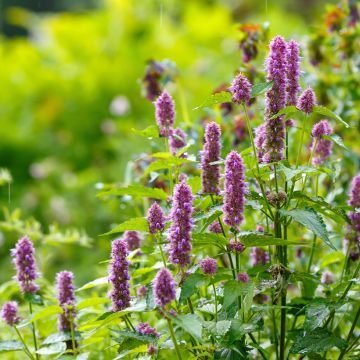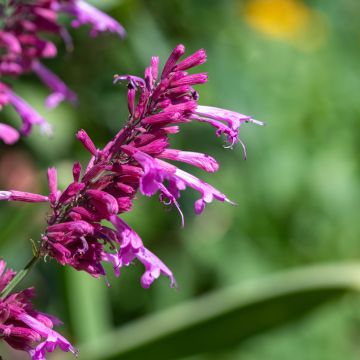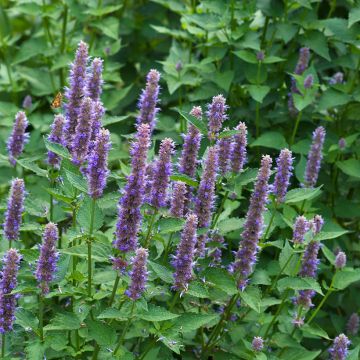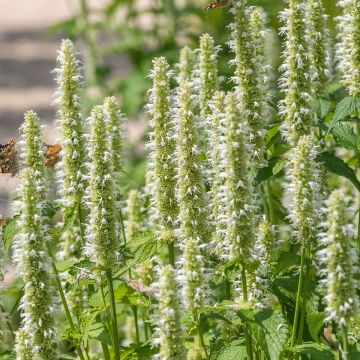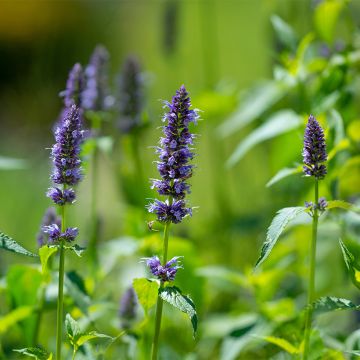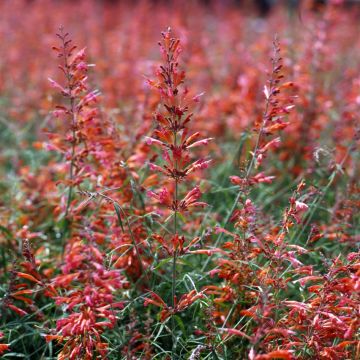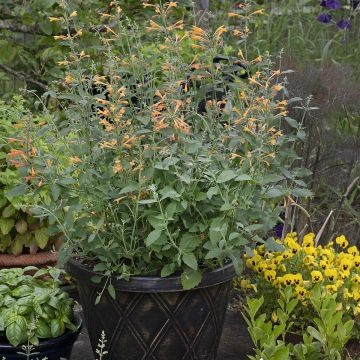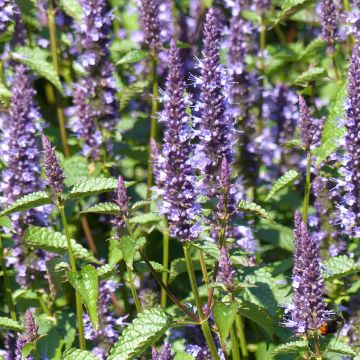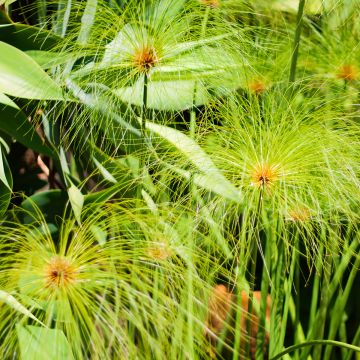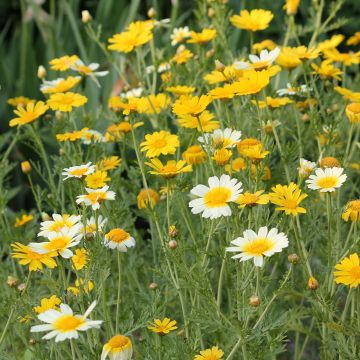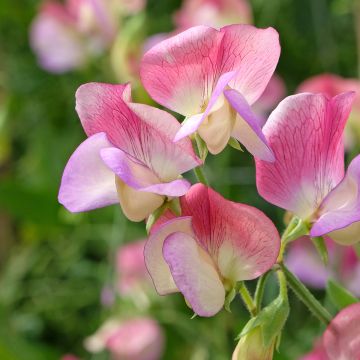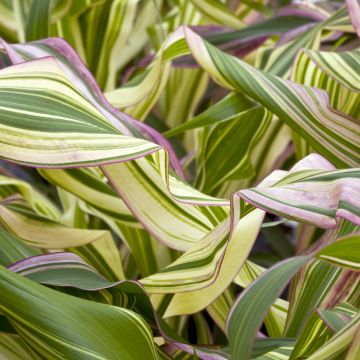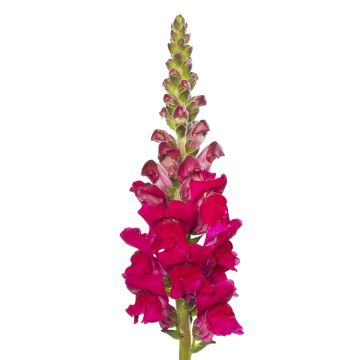

Graines d'Agastache foeniculum Golden Jubilee
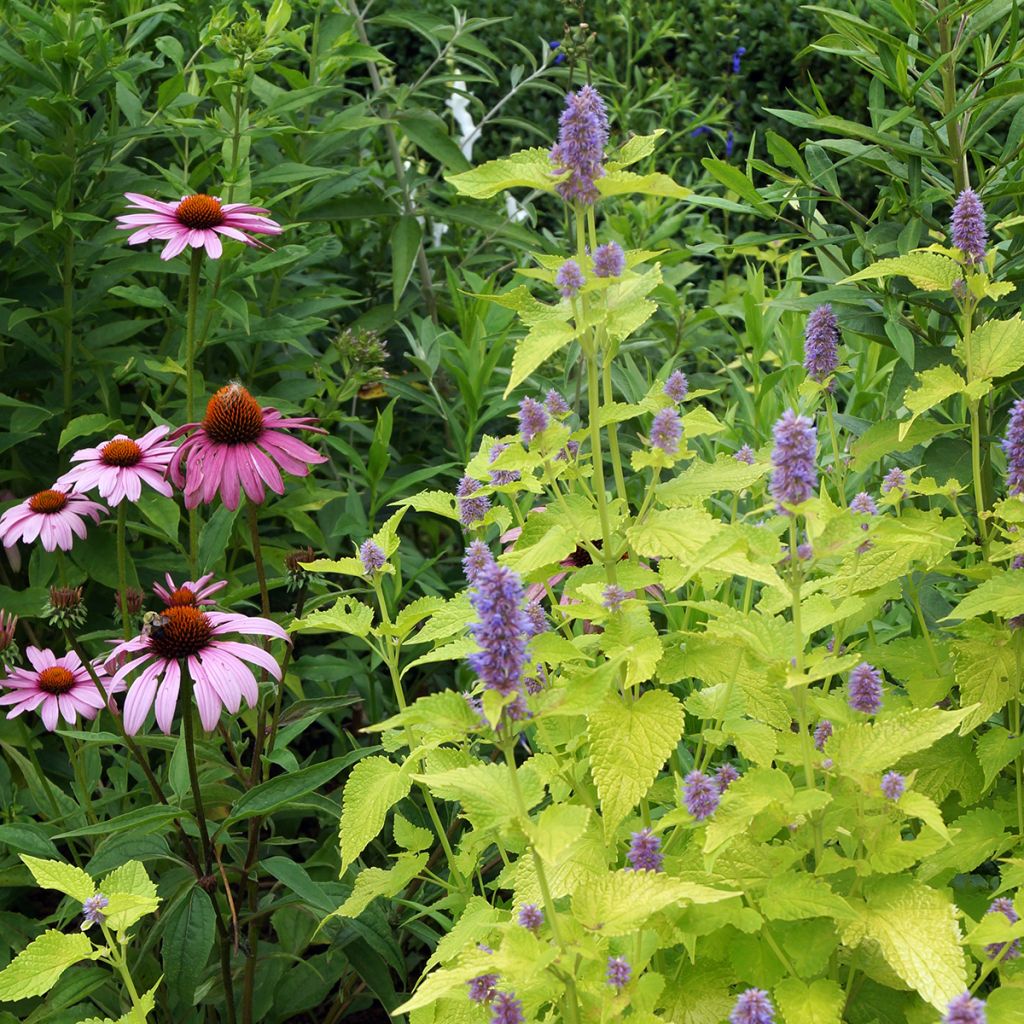

Graines d'Agastache foeniculum Golden Jubilee
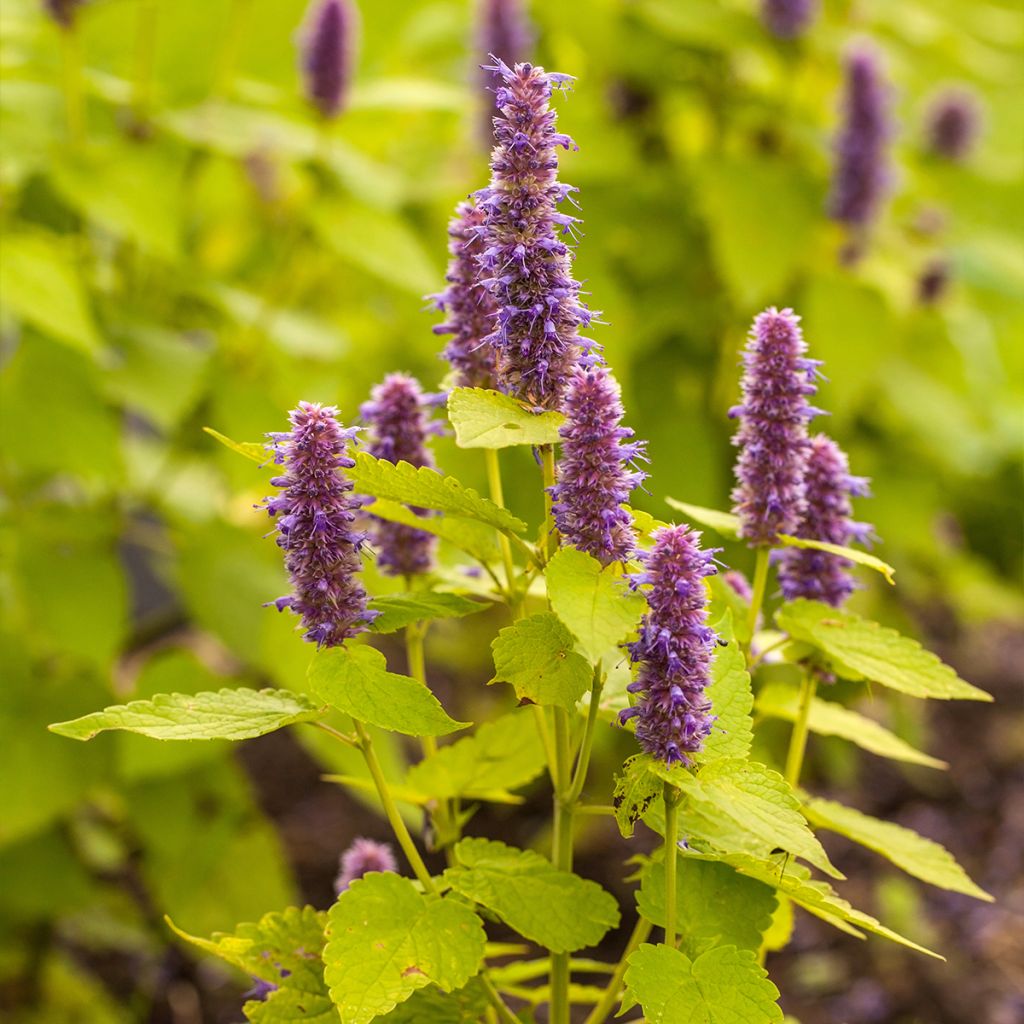

Graines d'Agastache foeniculum Golden Jubilee
Agastache foeniculum Golden Jubilee - Anise Hyssop
Agastache foeniculum Golden Jubilee
Korean Mint, Anise Hyssop, Giant hyssop
No seed has come out. Very few seeds in the packet - I will not recommend Promesse de fleurs.
Dominique P., 12/10/2018
Special offer!
Receive a €20 voucher for any order over €90 (excluding delivery costs, credit notes, and plastic-free options)!
1- Add your favorite plants to your cart.
2- Once you have reached €90, confirm your order (you can even choose the delivery date!).
3- As soon as your order is shipped, you will receive an email containing your voucher code, valid for 3 months (90 days).
Your voucher is unique and can only be used once, for any order with a minimum value of €20, excluding delivery costs.
Can be combined with other current offers, non-divisible and non-refundable.
Home or relay delivery (depending on size and destination)
Schedule delivery date,
and select date in basket
This plant carries a 6 months recovery warranty
More information
We guarantee the quality of our plants for a full growing cycle, and will replace at our expense any plant that fails to recover under normal climatic and planting conditions.
Would this plant suit my garden?
Set up your Plantfit profile →
Description
Anise hyssop 'Golden Jubilee' (Agastache foeniculum) is a magnificent award-winning variety. Its long purple to mauve flower spikes contrast beautifully with the fresh, golden-green scented foliage. Loved by bees and butterflies, it is perfect for bringing colour and harmony to the wilder areas of the garden. It can also be grown in pots. Anise hyssop enjoys full sun or semi-shade and cool, well-drained soil.
Agastache foeniculum, commonly known as Anise hyssop or Liquorice mint, belongs to the Lamiaceae family and is native to North America. It hybridizes easily with other Agastache species and has no trouble self-seeding. Depending on the climate and the soil type, the plants will reach a mature height of 45 to 120 cm. 'Golden Jubilee' is a perennial plant (often grown as an annual) that forms bushy, upright clumps. The angular stems bear triangular, pubescent, chartreuse green leaves with toothed margins (8 cm long). They give off an intense anise-like aroma. From July to October, beautiful flower spikes appear, about 4 to 8 cm in length, densely covered with small, blue, purple or white tubular bilabiate flowers. Wild varieties have blue flowers held in a mauve calyx.
Anise hyssop is a vigorous plant that is easy to grow. It withstands light frosts of about -7°C. It looks wonderful in natural, informal borders and cottage gardens. In the herb or vegetable garden, it can be grown alongside thyme, savory, chervil or basil. The dried flowers keep very well in bunches. The dried leaves are traditionally used in herbal teas or as an anise substitute for cooking.
Flowering
Foliage
Plant habit
Botanical data
Agastache
foeniculum
Golden Jubilee
Lamiaceae
Korean Mint, Anise Hyssop, Giant hyssop
Agastache anisata
Cultivar or hybrid
Other Agastache seeds
View all →Planting and care
Sow from February to April at 15-20°C in good quality soil and cover with a fine layer of compost or vermiculite. Keep the soil moist but not soggy and make sure to give the seeds enough light to germinate. To speed up the process, place in a propagator or place the seed tray inside a polyethylene bag until germination (30-90 days).
When the plants are strong enough to handle, transplant them into pots and move them to a cooler place until they are ready to taken outdoors. When all risk of frost is over, harden them off for 7 to 10 days then plant them out in a sunny location with fertile, well-drained soil. Make sure to leave about 60 cm between each plant.
Agastache is a strong-growing, undemanding plant. It adapts well to most soils, even limestone and clay, as long as there is sufficient drainage. In heavy soil, add some gravel or coarse sand to the garden soil. Choose a sunny to partially shaded location. Agastache plants self-seed abundantly and can become invasive. They resist moderate frosts (-5 to -7°C). To save the plants over winter, make sure to bury them under a thick layer of mulch during severe frosts. They will also need to be protected from greedy slugs and snails!
Sowing period
Intended location
Planting & care advice
-
, onOrder confirmed
Reply from on Promesse de fleurs
Similar products
Haven't found what you were looking for?
Hardiness is the lowest winter temperature a plant can endure without suffering serious damage or even dying. However, hardiness is affected by location (a sheltered area, such as a patio), protection (winter cover) and soil type (hardiness is improved by well-drained soil).

Photo Sharing Terms & Conditions
In order to encourage gardeners to interact and share their experiences, Promesse de fleurs offers various media enabling content to be uploaded onto its Site - in particular via the ‘Photo sharing’ module.
The User agrees to refrain from:
- Posting any content that is illegal, prejudicial, insulting, racist, inciteful to hatred, revisionist, contrary to public decency, that infringes on privacy or on the privacy rights of third parties, in particular the publicity rights of persons and goods, intellectual property rights, or the right to privacy.
- Submitting content on behalf of a third party;
- Impersonate the identity of a third party and/or publish any personal information about a third party;
In general, the User undertakes to refrain from any unethical behaviour.
All Content (in particular text, comments, files, images, photos, videos, creative works, etc.), which may be subject to property or intellectual property rights, image or other private rights, shall remain the property of the User, subject to the limited rights granted by the terms of the licence granted by Promesse de fleurs as stated below. Users are at liberty to publish or not to publish such Content on the Site, notably via the ‘Photo Sharing’ facility, and accept that this Content shall be made public and freely accessible, notably on the Internet.
Users further acknowledge, undertake to have ,and guarantee that they hold all necessary rights and permissions to publish such material on the Site, in particular with regard to the legislation in force pertaining to any privacy, property, intellectual property, image, or contractual rights, or rights of any other nature. By publishing such Content on the Site, Users acknowledge accepting full liability as publishers of the Content within the meaning of the law, and grant Promesse de fleurs, free of charge, an inclusive, worldwide licence for the said Content for the entire duration of its publication, including all reproduction, representation, up/downloading, displaying, performing, transmission, and storage rights.
Users also grant permission for their name to be linked to the Content and accept that this link may not always be made available.
By engaging in posting material, Users consent to their Content becoming automatically accessible on the Internet, in particular on other sites and/or blogs and/or web pages of the Promesse de fleurs site, including in particular social pages and the Promesse de fleurs catalogue.
Users may secure the removal of entrusted content free of charge by issuing a simple request via our contact form.
The flowering period indicated on our website applies to countries and regions located in USDA zone 8 (France, the United Kingdom, Ireland, the Netherlands, etc.)
It will vary according to where you live:
- In zones 9 to 10 (Italy, Spain, Greece, etc.), flowering will occur about 2 to 4 weeks earlier.
- In zones 6 to 7 (Germany, Poland, Slovenia, and lower mountainous regions), flowering will be delayed by 2 to 3 weeks.
- In zone 5 (Central Europe, Scandinavia), blooming will be delayed by 3 to 5 weeks.
In temperate climates, pruning of spring-flowering shrubs (forsythia, spireas, etc.) should be done just after flowering.
Pruning of summer-flowering shrubs (Indian Lilac, Perovskia, etc.) can be done in winter or spring.
In cold regions as well as with frost-sensitive plants, avoid pruning too early when severe frosts may still occur.
The planting period indicated on our website applies to countries and regions located in USDA zone 8 (France, United Kingdom, Ireland, Netherlands).
It will vary according to where you live:
- In Mediterranean zones (Marseille, Madrid, Milan, etc.), autumn and winter are the best planting periods.
- In continental zones (Strasbourg, Munich, Vienna, etc.), delay planting by 2 to 3 weeks in spring and bring it forward by 2 to 4 weeks in autumn.
- In mountainous regions (the Alps, Pyrenees, Carpathians, etc.), it is best to plant in late spring (May-June) or late summer (August-September).
The harvesting period indicated on our website applies to countries and regions in USDA zone 8 (France, England, Ireland, the Netherlands).
In colder areas (Scandinavia, Poland, Austria...) fruit and vegetable harvests are likely to be delayed by 3-4 weeks.
In warmer areas (Italy, Spain, Greece, etc.), harvesting will probably take place earlier, depending on weather conditions.
The sowing periods indicated on our website apply to countries and regions within USDA Zone 8 (France, UK, Ireland, Netherlands).
In colder areas (Scandinavia, Poland, Austria...), delay any outdoor sowing by 3-4 weeks, or sow under glass.
In warmer climes (Italy, Spain, Greece, etc.), bring outdoor sowing forward by a few weeks.






























